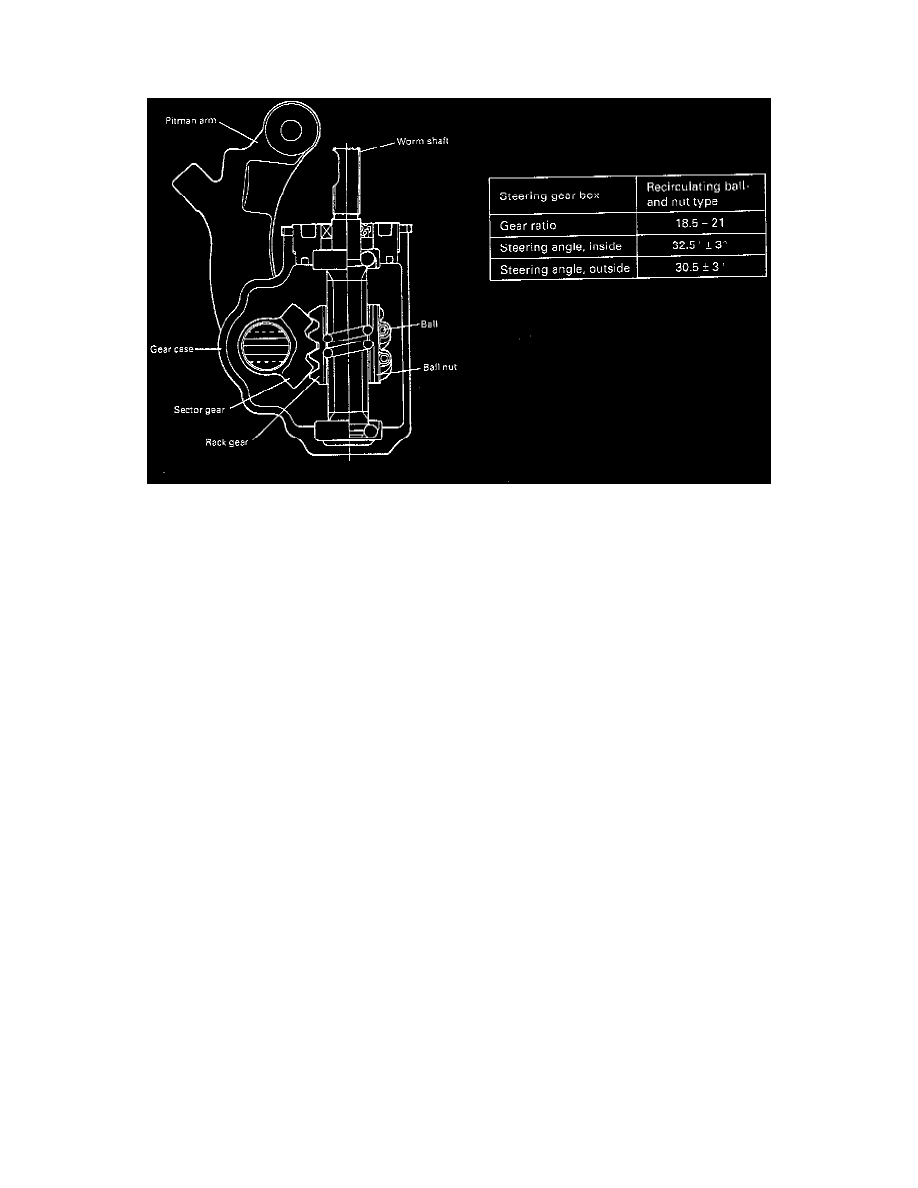Sidekick JSS 4D Hard Top 2WD L4-1.8L (1997)

Steering Gear: Description and Operation
Manual Steering
CONSTRUCTION AND OPERATION
The pitman arm is rigidly connected to the outer end of the shaft integral with the sector gear, which is inside the gear box and meshed with the
teeth of the nut capable of sliding along the worm. Between the nut and the worm is a row of steel balls, which serves two purposes: to provide
rolling contact between nut and worm and to keep the nut engaged with the worm as if the two were threadedly engaged. With the nut prevented
from turning, the rotation of the worm causes the nut to move up or down the worm.
The worm is an extension of the steering shaft. As the steering wheel is turned, the steel balls roll along in the groove and the nut moves up or
down. The steel ball that has reached the end of the groove in the nut enters the return guide. The guide sends the ball back to the other end of the
same groove. In this way, the row of balls recirculates.
By so moving, the nut turns the sector gear and hence the pitman arm. It should be noted here that it is through the steel balls that a rotary motion
of the worm is converted into a linear motion of the nut, which is then converted into another rotary motion of the sector gear.
The steering gear box is a precision-machined device, each part of it being machined to a closer tolerance for smooth conversion of motion, and is
built sturdily for long service life. Special tools and instruments are needed in addition to specialized skill when the gear box is to be overhauled.
For this reason, a gear box found to be in defective condition should be replaced with a new one; replacement is more economical and what is
perhaps more important, safer.
